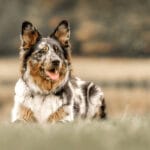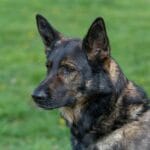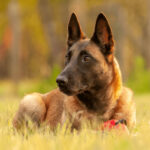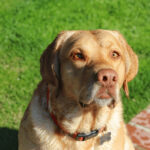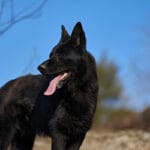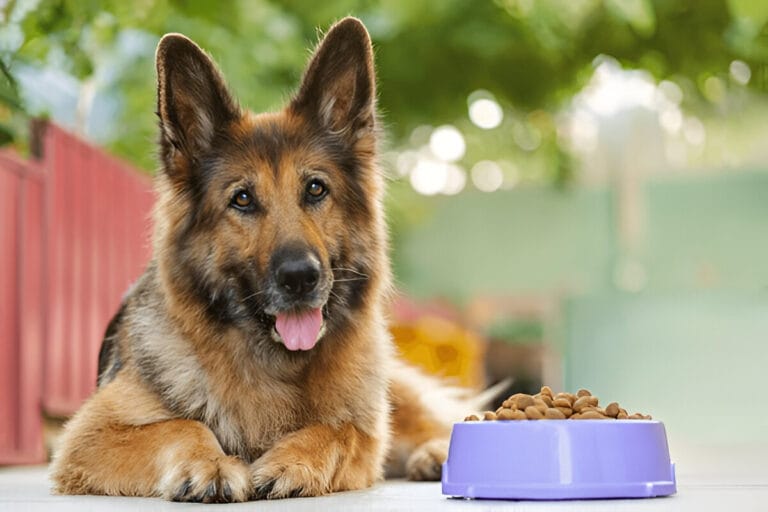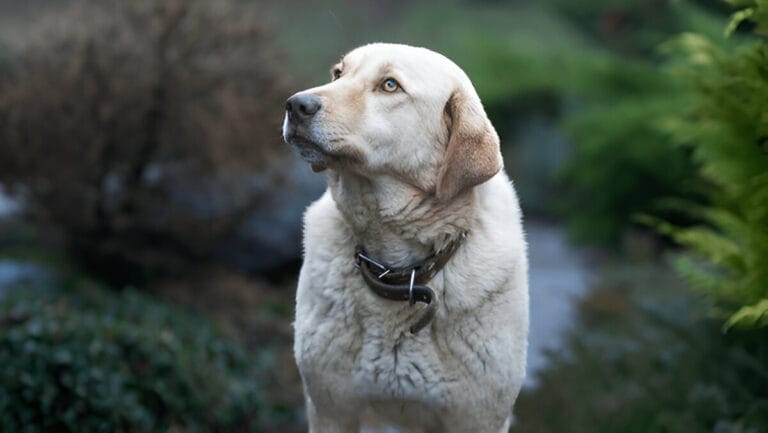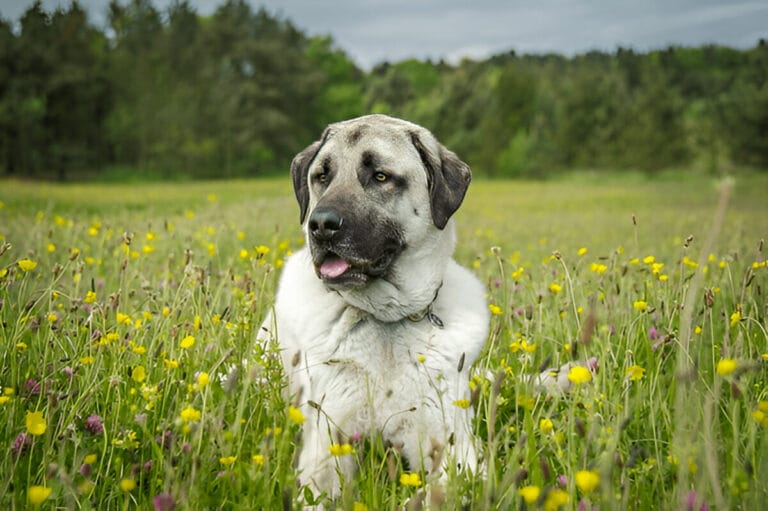What is the Husky labrador Mix ?
The Labsky (also known as Huskador or Huskadour) represents one of the most gorgeous hybrid canines you’ll encounter today. This cross between a Siberian Husky and Labrador Retriever has truly captured the eyes and hearts of millions of dog lovers across the world – and you can’t blame them.
These medium to large-sized mixed-breed dogs are becoming increasingly popular in shelters and rescues, though many owners call them by several names, including Labskies. From my years working with designer breeds, I’ve witnessed firsthand how these adorable pups have inherited the best qualities from both parent breeds, making them super devoted family pets.
What makes these animals so beautiful is their combination of being affectionate, energetic, and intelligent – traits that sound almost too good to be true until you read more in-depth information about this pup.
Labskys were first intentionally bred in the early 1990s, combining the working traits of Huskies with America’s sweetheart – the Labrador, which is known nowadays as the most popular breed in the United States. These dogs are relatively easy to train and quick to learn new commands, making them highly ideal for both novice and experienced pet owners.
Their athletic nature means they love to run, play Frisbee, and are great swimmers who benefit from interactive toys to keep their smarter-than-average minds engaged.
Heads up – if you’re considering adding a Labsky to your family, expect to remain active and be prepared for lots of extra long walks. These playful and hardworking mixed-breed dogs have almost inexhaustible energy reserve, historically inherited from Huskies who spent hours pulling sleds in icy conditions.
While they can be somewhat independent and challenging at times, their extremely protective nature toward families and loving disposition make them worth every bit of effort. The high-end image of owning such a smart, loyal, and active breed that inherits the best from both parents simply adds to their appeal as the pet of choice for those seeking a devoted companion.
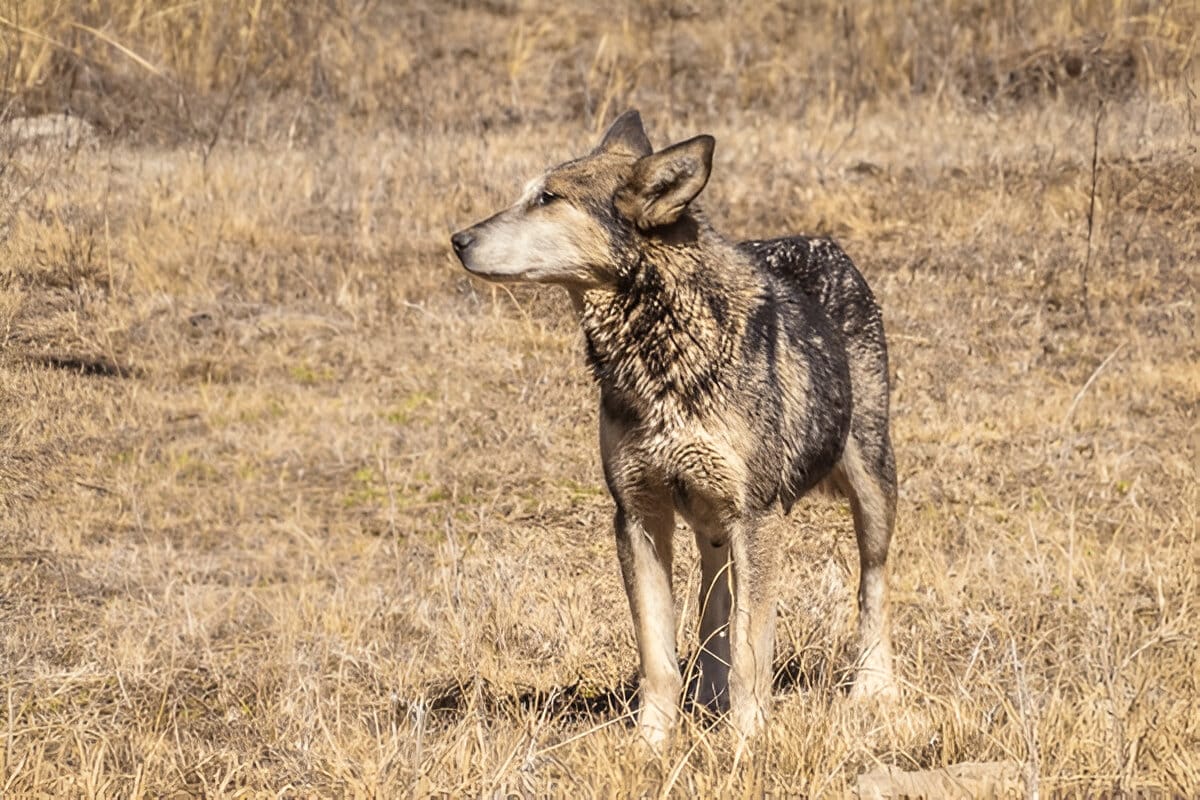
Photo credit: Shutterstock by Alex Borderline
Labsky characteristics
When it comes to appearance, Males typically weigh between 40 to 60 lbs, while Females range from 55 lbs down to the lighter end, standing 21 to 25 inches tall (some sources note 20 to 24 inches depending on the dominant parent traits).
These Large dogs sport a Double coat that can be Short to medium length, appearing in Black, brown, red, white, yellow, or striking combination of colors – particularly the stunning Blue eyes inherited from their Husky Labrador Mix side or Dark eyes from their Lab heritage. From my experience with mixed breed dogs registered with the Dog Registry of America (DRA), the coat requires Moderate attention during shedding season, though this trait varies depending on which inherent characteristics dominate from each parent.
What I find most surprising about this hybrid offspring is how their temperament can swing from the laid-back nature of a Labrador to the more hyper tendencies of their other parent – for instance, some Husky Labrador Mix dogs are prone to barking while others bark only occasionally.
The temperament of these lovable dogs makes them renowned as wonderful family pets and excellent playmates for children in general, being naturally Playful, affectionate, loyal, intelligent, and sociable with a lifespan of 10 to 15 years.
However, unlike Labradors who are well suited to being left to their own devices for extended periods of time, Husky Labrador Mix don’t like being alone and can develop separation anxiety that may manifest through excessive or destructive behavior – a trait I’ve found almost universal in this hybrid.
Their loving nature and need for affection from families means they thrive when socialized early and consistently, making the answer “Yes” when asked if they’re good with kids, and “No” when it comes to leaving them alone for long stretches, especially without proper preparation and training.
Coat color and variations
The coat colors and patterns that a Husky Labrador Mix can inherit represent a wide range of possibilities, thanks to the diverse genetics from both parent breeds. Labskies typically have a double coat like both their parents, with short to medium length fur and a dense undercoat that can vary in thickness and texture – making their coats usually well-suited for different weather conditions.
From my years working with this mixed breed, I’ve observed they come in an incredible array of options: solid black, chocolate, yellow, and cream are often inherited from the Labrador side, while more complex patterns seen in Huskies include gray, silver, various shades of white, and combinations that create striking sable coloration.
Some Labskies even display rarer types like the wolf-like agouti pattern or tiger-striped brindle markings that make each dog truly unique.
Bi-color and tri-color variations are definitely possible, featuring brown, white, and other hues in combinations that can greatly differ from one pup to another, reflecting the rich genetic diversity of this mixed breed.
What makes each Husky Labrador Mix so special is how their specific color pattern tells the story of which parent’s genetics dominated – some lean heavily toward the Labrador side with solid colors, while others showcase the more intricate markings typical of their Husky heritage.
The unpredictability of these color combinations is part of what makes welcoming a Husky Labrador Mix into your family such an exciting experience, as you never quite know which beautiful combination of traits will emerge.
Physical traits and appearance
Size and Build
Labrador Siberian Husky mix dogs showcase a medium to large-sized frame with a well-muscled, athletic build that usually features a broader chest from their Lab heritage combined with the leaner build characteristics inherited from their Husky parent, creating the perfect Size and Build balance for active families.
Head and Face
Often displaying a broader skull inherited from their Labrador parent combined with the more angular features of a Husky, these dogs showcase ears that can be floppy like the Lab’s or erect like the Husky’s, while their striking eyes may be brown, blue, or even heterochromatic with two different colors that create an unforgettable Head and Face combination.
Coat
The Husky Labrador Mix features a double-coated fur system with a dense undercoat beneath a longer outer coat, where length can vary from medium to long depending on genetics, creating diverse colors and patterns that make each Coat truly unique.
Tail
The Labsky’s tail is usually long and thick, appearing either curved over the back like a Husky’s or held straight like a Lab’s, making each Tail a unique blend of both parent breeds.
How big does a Labsky get?
Typically, a Husky Labrador Mix weighs between 40 to 60 pounds, although some grow larger depending on which parent genes dominate, and they usually stand 20 to 25 inches tall at the shoulder.

Photo credit: Shutterstock by Montana Isabella
Labsky history
Husky Labrador Mix (also known as Huskadors) emerged during the designer dog trend that gained popularity in the late 20th and early 21st centuries, which involved intentionally crossing purebred dogs to create new mixed breeds with desirable traits from each parent.
While the exact origin of the Labsky isn’t precisely documented, they most likely first appeared in the 1990s and 2000s when this breed was created by crossing Labrador Retrievers with Siberian Huskies, aiming to combine the friendly, outgoing nature of the Lab with the striking appearance and endurance of the Husky.
From my experience working with mixed breeds during this period, breeders were specifically targeting families who wanted a dog that could offer both the gentle temperament Labs are famous for and the athletic prowess that makes Huskies such impressive working dogs.
Although Husky Labrador Mix aren’t recognized or standardized by major kennel clubs like the American Kennel Club (AKC) or the United Kennel Club (UKC), However, various registries do accept them, and enthusiasts continue looking for this unique companion that bridges the gap between two beloved breeds.
The popularity of these dogs has grown steadily as more families discover their versatility – they’re not just another mixed breed, but a thoughtfully developed cross that addresses the specific needs of active households seeking a balance between the Lab’s trainability and the Husky’s adventurous spirit.
Labsky personality
Husky Labrador Mix inherit personality traits from both Labrador Retrievers and Siberian Huskies, resulting in a unique and often energetic temperament that makes them typically friendly, outgoing, and intelligent dogs with a strong desire for human companionship.
They display the Lab’s eagerness to please combined with the Husky’s independent streak, which can make them both affectionate and sometimes stubborn in equal measure. Due to their mixed heritage, these dogs may show prey drive and a tendency to wander or escape if not securely contained, while also being quite vocal in expressing themselves through a range of sounds from traditional barks to the characteristic Husky talking and howling that I’ve observed makes them excellent communicators with their families.
Temperament and behavior
Highly energetic and playful
Highly energetic and playful, Labskies inherit high energy levels from both parent breeds and require significant daily exercise – typically 1-2 hours of active play per day that should include long walks, runs, fetch games, and swimming opportunities to keep them mentally and physically satisfied.
Without adequate stimulation, these dogs can become destructive and develop serious behavior problems, which I’ve witnessed firsthand in under-exercised Labskies who resort to chewing furniture, digging, or excessive barking as outlets for their pent-up energy.
Intelligent and trainable
Intelligent and trainable dogs, Husky Labrador Mix are typically quick learners, inheriting intelligence from both Labs and Huskies, making them excel at obedience training and they often enjoy learning new tricks and commands, However, this means they can get bored easily, so varied and engaging training sessions are crucial for success.
Strong desire for human companionship
Husky Labrador Mix have a strong desire for human companionship and are usually very social dogs that form strong bonds with their families, thrive on attention and interaction, but can suffer from separation anxiety when left alone for long periods – this trait makes them excellent family pets but means they require consistent presence and engagement.
Can be stubborn or independent at times
While generally eager to please like Labs, Labskies can be stubborn or independent at times, inheriting the Husky’s willful streak that can manifest as occasional stubbornness during training or a tendency to make their own decisions, making Consistent, positive reinforcement-based training from an early age key to managing this challenging trait.
Potential to wander or escape
Husky Labrador Mix have the potential to wander or escape since Huskies are known escape artist with roaming tendencies, and Labskies can inherit this trait, leading them to dig under or jump over fences when left unsupervised outdoors, making Secure fencing and careful monitoring during outdoor time important to keep your Labsky safe.
Personality Unpredictability
Since a Husky Labrador Mix is a mix of two somewhat different breeds, their personality can be fairly unpredictable – they might inherit more of the laidback, affectionate, and calm temperament from their Labrador parent or the independent, highly-strung, and stubborn traits from their Husky side, or something between the two extremes, but Either way, they remain social and loyal thanks to both parents having histories of working closely with humans.
Breed Characteristics Comparison
Labradors are renowned for their gentle nature and remain popular family pets because they’re highly intelligent, eager to please, making them easy to train for novice owners, while Siberian Huskies are far less eager-to-please than most outgoing dogs and are notoriously stubborn and independent with inexhaustible energy reserves that can make them quite a handful if you don’t put in the work.
A Husky Labrador Mix will likely fall somewhere between these extremes, although their temperament can be difficult to predict precisely – what you can count on is getting energetic, loyal animals that combine the best and most challenging aspects of both parent breeds.
Training and socialization
Early socialization and positive reinforcement training are crucial for Husky Labrador Mix due to their intelligence and potential for stubbornness – while their smarts allows them to pick up commands quickly, early intervention is key to establishing good behavior patterns before bad habits can start. Use praise, treats, and affection to reward desired behaviors, as these dogs are quite sensitive and respond well to encouragement rather than harsh corrections.
Training tips
Be Consistent – Consistency is crucial in training your Labsky, so Use the same commands and routines to avoid confusion and helps your Labsky understand what’s expected of them.
Keep Training Sessions Short and Fun since Labskies are intelligent but can lose interest if sessions are too long or repetitive – aim for short 10-15 minute engaging sessions with varied activities that provide Mental Stimulation. Incorporate puzzle toys, obedience work, and interactive games into your daily routine to challenge their mind, because when they get bored they can become restless and destructive.
Once basic commands are established, teach advanced tricks since their intelligence makes them excellent candidates for agility, fetch games, and scent work that will make training sessions even more rewarding.
To make training easier, consider the following tips that work particularly well with this breed: Positive reinforcement is the best and better strategy for this breed – Do not punish your dog for not obeying or forgetting commands, as this can damage their trust and willingness to learn. Set up regular playdates with other dogs since Playing with others is a great way to keep them entertained, socialized, and mentally engaged while burning off excess energy.
Invest in preventing Boredom before it can set you back in training progress – Make sure you have lots of puzzles and interactive toys on hand to keep their active minds occupied when you can’t provide direct attention.
Obedience Training Importance
Obedience training is a must for any Husky Labrador Mix and should start the moment you bring your dog home, as it will help develop a positive relationship with your pet while enabling you to remain in control of their strong-willed nature.
Intelligence and Trainability
Husky Lab mixes are very intelligent canine companions that, with a responsible and patient owner, can train exceptionally well – Huskadors will go through training much easier when lessons are consistently done from an early age.
Inherited Traits Impact
This Husky Labrador Mix crossbreed has inherited the Labrador’s capacity to learn things quickly and eagerness to please their family, making training a breeze, However, there’s a chance your pet might be extremely stubborn due to their Husky parentage, creating a situation where extra patient handling is needed when they have their own ideas about what they wants to do – Fortunately, this independent streak can be tempered with heaps of positive reinforcement and repetition, making it important to stay consistent.
Socialization Training
Make sure to start socializing your puppy the moment you bring them home – this crucial step shapes your dog’s entire personality. Invite friends over regularly and take your pet to different places like parks, cafes, and busy streets where it’s a good idea to let them interact with various people and animals.
How long can the Labsky be left alone?
Most dogs should not be left alone for extended periods, and Labskies are no exception to this rule. However, the specific duration can vary depending on your individual dog’s temperament, training level, and age – from my experience with husky labrador mixes, younger pups need attention every 2-3 hours while well-trained adults can handle 6-8 hours maximum.
Adult Labskies (over 18 months old)
Ideally, mature adult Husky Labrador Mix over 18 months old should be left alone for 4-6 hours maximum, though in necessary situations they can handle up to 8 hours – just not regularly as this husky labrador mix thrives on companionship.
Puppies and young Labskies (under 18 months)
When I first brought home my Husky Labrador mix puppy, I quickly learned that young Labskies under 18 months require much shorter exercise periods – typically no more than 2-4 hours of activity per day. These energetic puppies have bursts of playfulness followed by long naps, making their exercise needs quite different from adult dogs.
Well-being Considerations
Remember, even though your Husky Labrador Mix can physically handle being left alone for up to 8 hours, it’s not ideal for their mental and emotional well-being when done regularly. When long absences are unavoidable, it becomes crucial to ensure they receive plenty of attention, exercise, and stimulation when you’re back home.
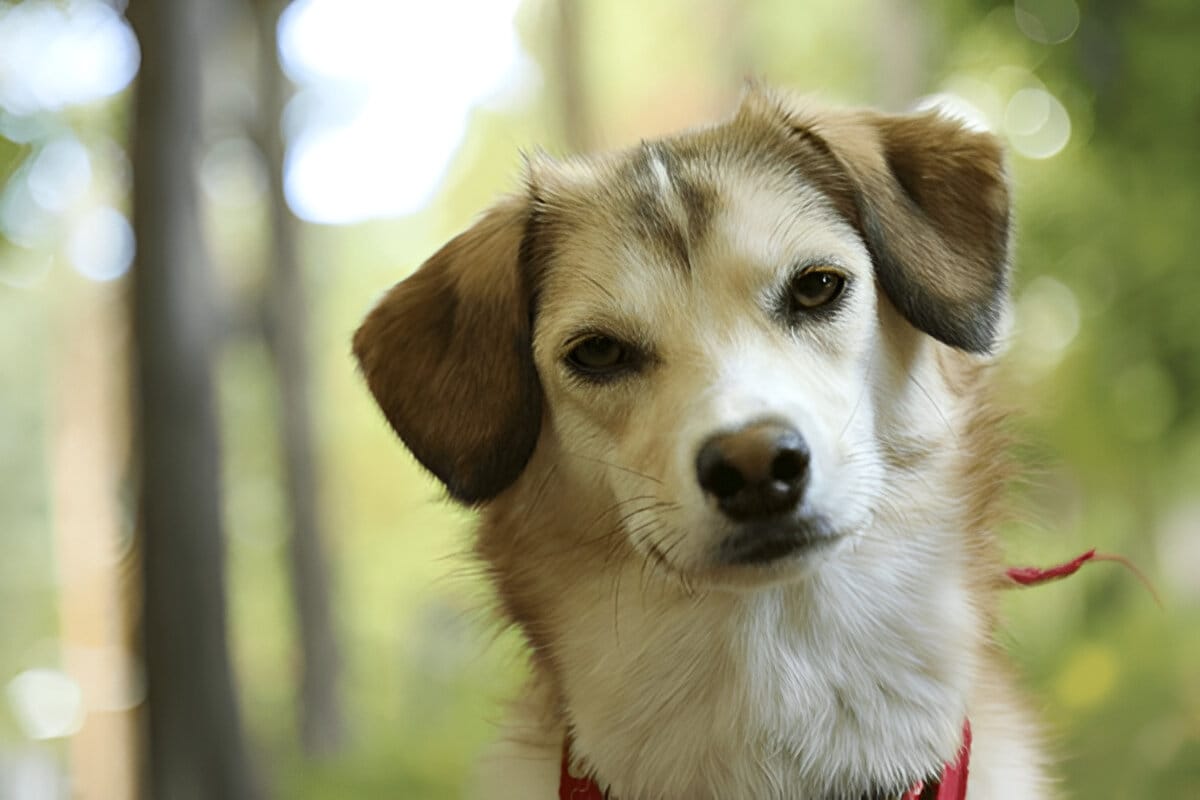
Photo credit: Shutterstock by Montana Isabella
Labsky care
As all dogs need professional attention, it’s important to keep Husky Labrador Mix health monitored through regular veterinary checkups that detect health concerns early. Your vet will help develop a comprehensive care routine tailored specifically for your dog to maintain optimal wellness. Keep up with vaccination schedules and preventive treatments to ensure your Husky Labrador Mix regular health maintenance stays current for a healthy lifestyle.
Labsky grooming needs
Proper grooming keeps your Husky Labrador Mix looking good and contributes to their overall health while helping strengthen the bond between dog and owner through regular care sessions.
The exact needs will vary depending on your individual dog’s coat type and lifestyle, However, it’s worth noting that Labskies typically have moderate to high maintenance requirements due to their double coat inherited from both parent breeds, making them prone to seasonal periods of heavy shedding.
From my experience with three different Labskies over the past decade, I’ve learned that consistent brushing during spring and fall molting seasons prevents furniture disasters and keeps their beautiful coat healthy and manageable.
Coat care
Brushing 2-3 times per week works normally, but switches to daily sessions during shedding seasons. Shedding stays Moderate year-round with heavy periods twice each year during spring and fall. Bathing every 6-8 weeks or as needed helps maintain coat health – avoid over-bathing to protect their natural oils.
Nail care
Trim nails every 3-4 weeks or as needed for your mixed breed’s comfort. Regular walks on hard surfaces help naturally file down their nails between trimming sessions.
Dental care
Brush teeth 2-3 times per week or daily if possible for optimal care. Provide dental chews and toys to help maintain good oral health between brushing sessions.
Eye and ear care
Check and clean ears weekly, especially if they inherited the floppy Lab’s ear shape. Watch for signs of infection like redness, odor, or excessive wax buildup. Wipe around eyes regularly to prevent tear stains and irritation from developing.
Additional considerations
Professional grooming every 2-3 months proves beneficial for maintaining your mixed breed’s coat health. Pay extra attention to coat care during shedding seasons when fur becomes unmanageable. Regular grooming sessions provide a good opportunity to check for skin issues and abnormalities early.
Feeding and nutrition
Like all dogs, Labsky’s dietary needs change from puppyhood through adulthood and continue evolving into senior years – ask your veterinarian for recommendations. Your Labsky diet has far too much variation between individual dogs to make any specific recommendation without professional guidance.
General guidelines
Puppy feeding should follow feeding guidelines on dog food packaging for proper growth. Adult dogs need a good starting point of 1-2 cups of high-quality food per day divided into 2-3 meals. Senior dogs with age and lower activity levels decrease energy needs as metabolisms slow down – Reduce portion sizes accordingly.
Feeding frequency
Puppies need Frequent meals 3-4 times per day as necessary for proper growth and development. Adults eating 2-3 times daily is generally sufficient for maintaining healthy weight. Seniors require you to Adjust meal frequency and portion sizes based on your dog’s activity level and overall health status.
High-quality dog food
Avoid foods with excessive fillers, artificial additives, and by-products when selecting nutrition for your mixed breed. Choose premium, well-balanced dog food formulated for small to medium breeds depending on your dog’s size. Look for high-quality animal proteins like chicken, turkey, or fish listed as the primary ingredient on labels.
High-Energy Diet Requirements
Husky Labrador Mix are high-energy animals that need a nutrient-dense diet to stay active, healthy, and happy throughout their lives. Good-quality dry food is ideal provided the protein content is at least 25% and free of filler ingredients that offer no nutritional value.
Ideally, you want to feed your Labsky around 80% kibble and 20% wet food or lean meats for optimal nutrition. Try to make sure the first-listed ingredient is animal-based and listed in the top three components on the label.
Recipes formulated specifically for breeds like Huskies work best as they contain the perfect balance needed to keep your dog energized for daily activities.
I highly recommend splitting your dog’s daily portion into two meals to help prevent bloat from eating too fast during feeding time. Although these energetic dogs burn many calories every day, you should still be careful about overfeeding to maintain proper weight. Finally, like all dogs, ensure your pet has access to fresh, clean water at all times for proper hydration.
Labsky and family compatibility
Husky Labrador Mix, a hybrid of Labrador Retriever and Siberian Husky, are generally considered excellent family dogs that inherit many desirable traits from both parent breeds, making them suitable for a variety of households.
Positive traits for families
Energetic and playful, Labskys love staying active and enjoy spending time outdoors, making them great companions for families who like hiking, running, or playing fetch together. Loving and affectionate by nature, Both Labrador Retrievers and Siberian Huskies are known for their friendly nature, and Labskys typically inherit these qualities, making them wonderful with children and adults alike.
These Intelligent and intelligent dogs are quick learners that can be trained using positive reinforcement and mental stimulation activities. Good with proper socialization, they’re gentle and patient, though supervision is always recommended, especially around young children. Adaptable and adaptable dogs, Labskys can thrive in various living situations, including apartments, houses, and homes with yards.
Considerations
Socialization is key, as Early socialization proves crucial for Husky Labrador Mix to develop good behavior and get along with other animals and people throughout their lives. High energy levels mean they require regular exercise and mental stimulation, so they may not be the best choice for families not able to provide sufficient physical activity daily.
Shedding concerns arise since Both Labrador Retrievers and Siberian Huskies are heavy shedders, and Husky Labrador Mix typically inherit this trait – problematic for those with allergies or a preference for low-shedding dogs. Training challenges exist because while intelligent, these dogs can be stubborn at times, making consistent training with positive reinforcement absolutely essential for success.
Family Dog Suitability
The Husky Labrador Mix makes a great family dog long as everyone is on-board with the proper way of handling and training them consistently. Consistency is key to ensure they’re trained and socialized properly from an early age.
Owner Requirements
This dog suits all types of owners from single households to families with small children – just make sure you have the time, energy, and patience to ask yourself if you have the dedication needed to provide the best possible life before getting one.
Lifestyle Compatibility
Labsky’s high energy levels mean it needs someone with an active lifestyle – this magnificent dog is not the right pet for busy employees or those away from home for long hours. This people-centered canine requires family time, dedication, space, and budget to thrive properly.
Ideal Companion
The Husky Labrador Mix is a unique dog that makes a fantastic companion – loyal, loving, and protective – but needs someone to love them back and dedicate the time and effort to ensure their physical and mental requirements are met.
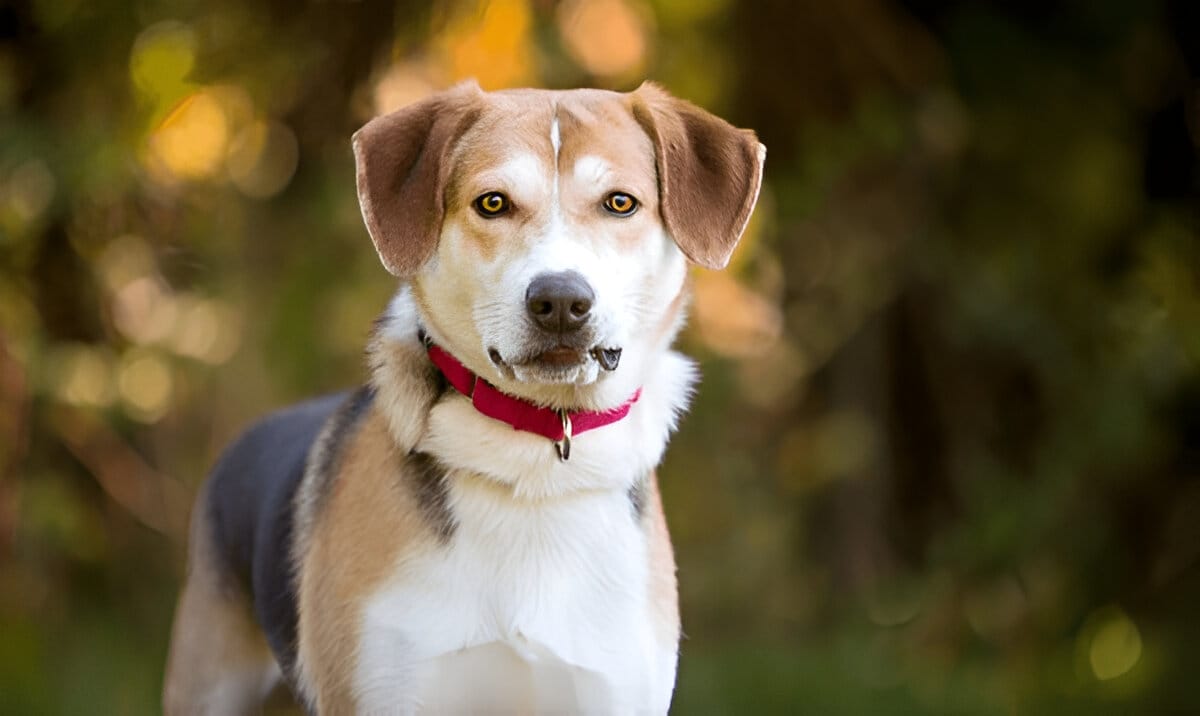
Photo credit: Shutterstock by Mary Swift
Labsky health issues
Husky Labrador Mix are generally healthy dogs but remain prone to certain health conditions – here are common issues to be aware of for your mixed breed. Cataracts cause clouding of the lens in the eye that can lead to blurred vision or blindness if left untreated.
Glaucoma involves Increased pressure within the eye that can damage the optic nerve over time. Allergies create hypersensitivity to allergens, resulting in a condition where the immune system overreacts to harmless substances, causing symptoms like sneezing, itching, and runny nose. Hip Dysplasia occurs when the ball and socket of the hip joint do not fit together properly, leading to pain, lameness, and arthritis in affected dogs.
Preventing health problems
To help your Husky Labrador Mix live a long, healthy life, it’s essential to prioritize preventative care from puppyhood through their senior years. Regular veterinary checkups are crucial for early detection and treatment of potential health issues before they become serious problems.
Providing a high-quality diet and ensuring adequate exercise helps maintain proper weight and reduces the risk of obesity-related problems that commonly affect this active breed mix.
Preventative measures like vaccinations, heartworm prevention, and regular dental cleanings protect against common diseases and infections throughout your dog’s lifetime. When considering breeding, genetic testing can identify carriers of inherited conditions that may affect future generations.
By taking these proactive steps, you can significantly improve your Labsky’s chances of enjoying a happy, healthy life with your family for many years to come.
Breed Health Considerations
Mixed breed dogs are typically healthier than their parent breeds, but this also means your Husky Labrador Mix could still be susceptible to health issues that pelage Labradors and Siberian Huskies, therefore it’s vital to request your breeder or vet conduct a test on your puppy to reveal the presence of congenital conditions in mixed breeds like arthritis, eye problems, skin conditions, heart issues, elbow and hip dysplasia.
You should take extra care that your dog doesn’t become obese as this increases the odds they’ll develop joint problems, so it’s in their best interest to stay on the lookout for symptoms of conditions like Allergies, Cataracts, Degenerative Myelopathy, Dental problems, Epilepsy, Exercise-induced collapse, Glaucoma, and Hemophilia – visit your veterinarian regularly for checkups.
3 Reasons Why You Should Get a Lab Husky
Exercise Benefits
You get a steady exercise buddy with a Lab Husky mix that needs daily activity – Whether you’re into walking, running, or riding your bike, this canine will match your every step of the way. Playing at the park, swimming at the beach, or more fun activities become enjoyable with your Husky Labrador Mix around.
Training Advantages
You can train them yourself since this very intelligent breed is easy to learn commands – you don’t even need to go to obedience school for basic training.
Family Compatibility
This mix suits any family – the Husky mixed with Lab makes a good dog for anyone who loves children since they’re patient around kids. New owners will find them manageable as long as you provide enough exercise and mental stimulation daily.
3 Reasons Why You Shouldn’t Get a Husky Labrador
Shedding Issues
Has a tendency to shed a lot since the Husky Lab mix comes from two parent breeds that shed heavily – Expect your mixed breed dog to shed excessively during shedding season in Spring and Fall.
Behavioral Challenges
Exhibits destructive tendencies from anxiety and boredom since this dog loves being around family and needs a lot of mental stimulation daily. Leaving them alone for long periods can cause them to destroy and chew things, bark excessively, or dig up your yard.
Space Requirements
Needs large space as this dog has high energy levels and requires ample room to run around and play – not a good fit for owners who live in small apartments or condominium units.
Conclusion
The Husky Labrador Mix is a uniquely beautiful canine – these dogs make wonderful family pets with a ton of energy that’s suited for more active owners with large backyards. Husky Labrador Mix aren’t suitable for apartment living and aren’t good choices for home owners frequently away with little time to spend with them, as they need at least 2 hours of exercise and interaction per day. They’re ideal for novice owners willing to take on an occasionally headstrong dog, since they’re highly loyal and affectionate animals that bond deeply with their families.


